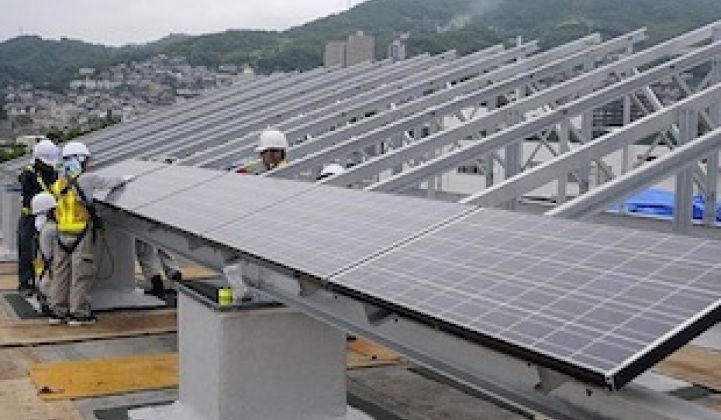Japan is emerging as a hot spot for energy storage projects, as utilities and technology companies look to battery-based solutions in response to the surge in solar PV installations.
Two new battery storage projects have been announced in the past week, with Toshiba to install a 20-megawatt-hour/40-megawatt lithium-ion battery project in Tohoku, and the island of Okinawa announcing a 2-megawatt battery storage project on Tuesday.
Japan is expected to be the largest market for solar PV installations in 2013, with around 9 gigawatts to be installed following the introduction of feed-in tariffs last year in response to the Fukushima nuclear disaster.
This year, the Japanese government launched a $300 million grant program to support the installation of large-scale battery systems to help integrate renewables into the grid.
Bloomberg New Energy Finance reports that that the Toshiba system announced on November 26 will provide frequency regulation and operating reserves for Tohoku Electric. It is due to be commissioned in February next year.
The Ministry of Economy, Trade and Industry announced a 2-megawatt lead battery storage system to be built on Okinawa, the country’s southernmost island, to respond to up to 57 megawatts of solar farms of 300 kilowatts or more that are expected to be in place by the end of the year.
The ministry says this is reaching capacity for the island, and new systems may not be able to be installed without storage. The 2-megawatt system may increase the renewable capacity by around 10 percent. The pilot project will be combined with another study looking into grid management.
Earlier this year, the northern island of Hokkaido also announced a 60-megawatt-hour/15-megawatt redox flow battery storage project would be built by Sumitomo because of the large amount of solar PV systems being installed.
Hokkaido Electric has received applications for 1.6 gigawatts of solar PV projects of 2 megawatts or more, thanks to its large amounts of available land, but the utility estimates it can only cope with 400 megawatts of that. It has only one 600-megawatt interconnection with neighboring Tohoku Electric.
Japan intends to reform its regional grid system and electricity market in the next few years to facilitate the introduction of more distributed energy. Currently, ten regional utilities are responsible for different sections of the grid and have a monopoly in each region for generation, transmission and distribution, and legislation is being introduced to loosen the control of the vertically integrated utilities.
***
Editor's note: This article is reposted in its original form from RenewEconomy.



